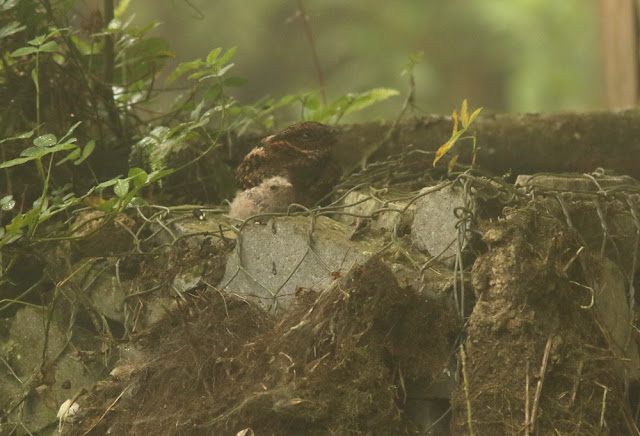Want to get ahead on your Christmas shopping? Because if you're in the market for a present for someone who will go (or honestly has gone) to Central America I've got your answer (in the latest of offerings from Princeton Press who kindly provided me a free review copy):
The book, about the size and weight of big Sibley is in my opinion the best book I've ever seen for Neotropic birds, in this case Central America (which for this book excludes Mexico). But while I've never been to Guatamala or Nicaragua (and may never get to those places), it's really nice to have those birds in this book.
The book is laid out in what I would consider to be the traditional field guide fashion with maps and description facing the birds
The illustrations are really well done. It's not easy to capture the gestault of a bird, but this illustrator (I assume Dale Dyer) succeeds, which is no easy task with some of the weird neotropic flycatchers that just don't look like anything else. But since not everyone here has had the joys of seeing flatbills and elaenias I included a plate here that shows one of our spring heralds that every knows well.
My photos aren't as sharp as replications of these plates deserve, and apologies for the glare.
I've immensely enjoyed just flipping through the book because the illustrations are really accurate, and bring back memories of seeing these species whose names start to run together after a while.
I did have a couple of quibbling points with the book:
- The upper right hand corner of the plate has a number which represents how close to life size the illustrations are. Overly accurate calculations amuse me and I don't really buy that every bird is exactly 19% of life size or 23% or 58% as those numbers would apply; I would have rounded those off.
- The descriptions start with an overview of the range, at times this gets really into the weeds with lists of locations where uncommon or rare birds were seen. You wouldn't know from the text that the Darien of eastern Panama is the best place to go to see a Harpy Eagle; instead the book lists places where it's been seen (including the relevant literature citations!) which would probably be better placed in a summary book rather than a field guide. The pips included on the range map which pertain to those records are similar size to the little area you can hopefully expect to be shown one prospectively. Sibley does a better job of separating vagrant records from core range in his book.
- I would have saturated the illustrations a tad more; maybe that's just a result of eyes that grew up on the best Eastern Peterson edition and then have mostly looked at Sibley plates since, but the figures could pop even more.
- Taxonomy gets confusing as anyone who has tried to compare eBird checklists with older field guides. In situations where there have been recent splits or lumps the author places a superscript number that refers to an addendum at the end of the book explaining the split or the lump. I would have placed those in the text, or at least included a line (National Geo style) stating "formerly known as ..." to make it easier to figure out which names goes to what bird.



































